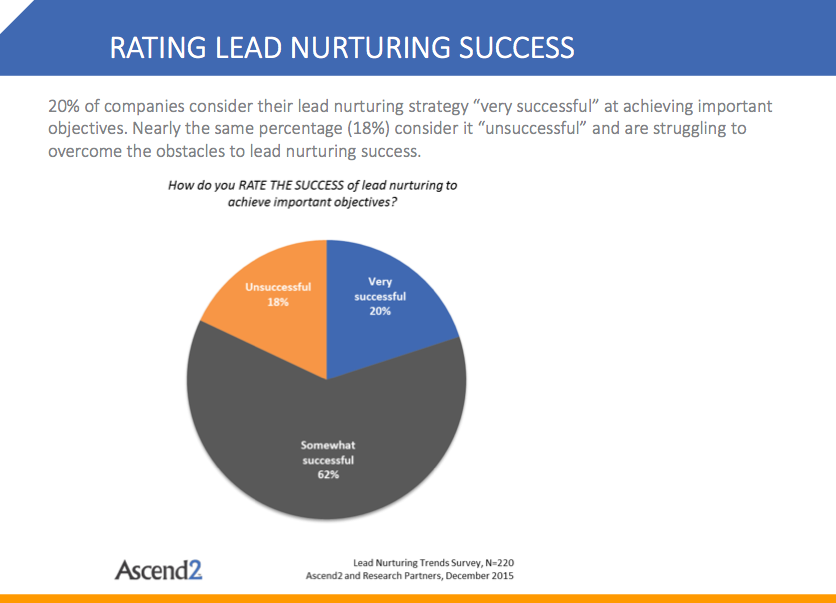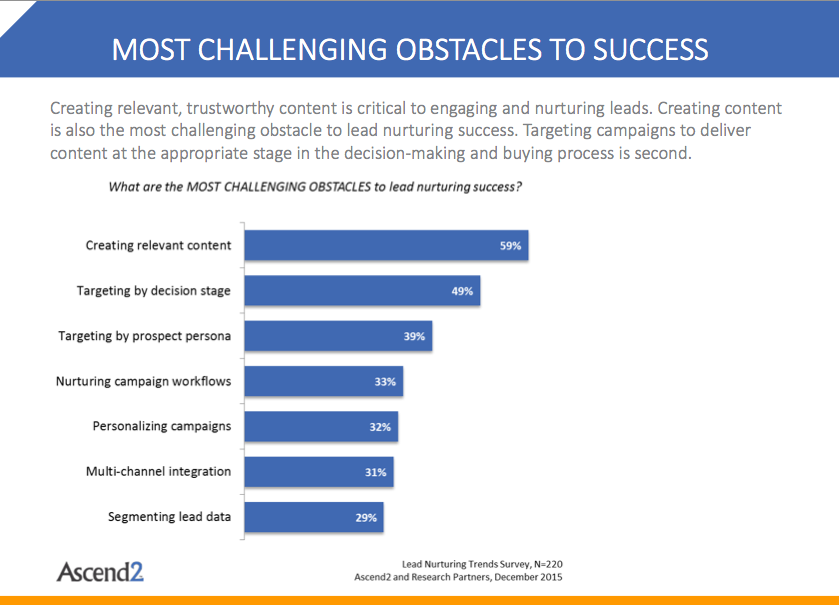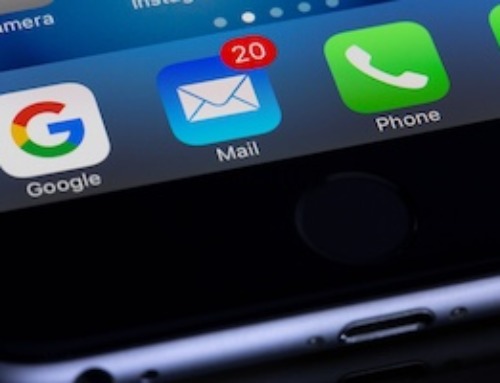With all of the advances in email marketing technology and cross channel marketing, email still remains a more effective tool for lead nurturing than lead generation. Oh, you can do lead gen with email for sure, but email’s powerhouse is nurturing prospects along, because it’s a perfect platform for doing so, introducing small bits of content over time…drip, drip, drip.
And what is lead generation good for if not followed up by a nurturing campaign anyway, one that progressively moves a slightly interested prospect through the sales funnel until they because at first a paying customer, and eventually (we hope) a loyal and engaged one?
Marketers challenged to use email for lead nurturing
I’m not alone in my belief that email is practically made for lead nurturing. According to Ascend2’s most recent research, 78% of respondents agreed email is by far the most effective online lead nurturing tool.
However, knowing that email works and knowing how to work email are two entirely different things. And numbers prove that marketers seem to be challenged by the latter (i.e. knowing how to work email). In this same study, most companies (62% of respondents) said their lead nurturing is only somewhat successful and almost one-fifth (18%) said it’s unsuccessful—almost one-fifth claimed their lead nurturing is not successful!

As the study says, lead nurturing is hard because it “…requires precisely targeted messaging delivered across multiple marketing channels and devices.” But lead nurturing—as hard as it is—is imperative. And is it as hard as so many of us think it is?
Lead nurturing seen through the personalization filter
What, specifically, challenges marketers when it comes to lead nurturing? The top three “most challenging obstacles” cited in the study are:
- Creating relevant content (59%)
- Targeting by decision stage (49%)
- Targeting by prospect persona (39%)

Interestingly (to me, at least) is how these three challenges can be addressed by personalization. Using a marketing technology like SmarterHQ enables a marketer to create relevant content because it’s content that’s delivered based on a prospect’s actions, such an email link clicked on or a web page browsed. Similarly, targeting by decision stage and persona can also both be viewed through the personalization lens. And personalizing campaigns is on this list, as you can see! But it’s way down there at 32%. In my opinion, it’s kind of a cart-before-the-horse situation, because personalization can enable the other top three objectives.
Are marketers beginning to see the light, er, technology?
There might be a growing awareness of this need for personalization technology, however. According to the Ascend2 study, marketing technology is cited as extremely important for lead nurturing for 75% of the respondents. Maybe it’s just they don’t realize yet what the marketing technology is, looks like, or does?
When a new Forrester study reveals that 37% of consumers delete email offers without ever reading them—primarily because they assume the messages are generic and not of interest, marketers should be even more interested in using personalization to make this lead nurturing happen. Because lead nurturing is non-existent if your emails aren’t ever opened in the first place!



